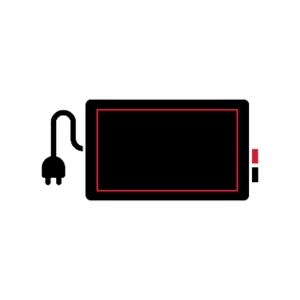AGM VS Flooded Batteries Overview
The purpose of this “AGM VS Flooded Batteries” article is to help you understand the differences and similarities of the two battery types.
You are most likely using rechargeable batteries to operate one of the following: your vehicle, security alarm, industrial equipment or renewable energy systems. We are safely making this assumption because rechargeable batteries account for nearly 50% of the battery sales in the world. Rechargeable batteries come in many different types of chemistries. However, the most proven type and the most popular chemistry is the lead acid.
Wet battery cell are commonly referred to as “flooded” batteries. Absorbed Glass Mat batteries are referred to as AGM batteries, SLA batteries or VRLA batteries. Both flooded and AGM batteries are considered lead batteries. These batteries contain an electrolyte solution which causes a chemical reaction and produces electrons. Lead acid batteries are recharged when they are put in contact with a reverse current. However, consider how they are designed, they each have their own pros and cons, which should be considered when selecting the batteries that is right for your application.
Flooded/Wet Cell Batteries
Flooded batteries are the most “traditional” type of battery. Flooded batteries very closely mimic the design of the original battery. Flooded/wet cell batteries contain a combination of liquid electrolyte, usually referred to as “acid”. This liquid must be measured and maintained by a professional on regular basis, in order for flooded batteries to perform properly.
Pros: Flooded/wet cell batteries are most suited for for backup power applications, utility, and grid energy storage.
Cons: The most prominent disadvantage of flooded batteries is that they require regular inspection and maintenance. Flooded batteries can also be accidentally damaged in forceful movement. Lastly, extreme climate conditions can have a greater impact on the battery life, since the electrolyte solution inside the battery is at risk of evaporate in hot temperature or freezing in cold climates.
Note: Although flooded batteries do require regular maintenance, they will last longer than many of their counterparts if they taken care of properly.
Absorbed Glass Mat (AGM) Batteries
AGM (absorbed glass mat) batteries contain a specially designed glass mat separator, hence the name. The separator wicks the electrolyte solution between the battery plates. This design of this material allows the fiberglass to be saturated with electrolyte – and to store the electrolyte in a “dry” or suspended state, compared to the traditional free liquid form. When the battery is used, electrolyte is transported from the glass mat to the battery plates. The mat has sufficient electrolyte for the battery to deliver its full capacity.
Pros: AGM batteries are referred to as maintenance free batteries, since they do not require watering service. AGM batteries don’t have no free liquid and minimal gassing. As a result, AGM batteries can perform better than flooded/wet cell batteries in applications where regular maintenance is not possible, such as in deserted areas. AGM batteries are referred to as “non-spillable” or “spill-proof”. This means that if the battery is tipped on its side or if it becomes physically damaged, it will not its electrolyte.
Cons: AGM batteries are very sensitive to over charging and undercharging, as doing so can significantly affect the life and performance of these batteries. AGM batteries perform most reliably they are only discharged up to 50% of battery capacity. This is usually refereed to as “depth of discharge” or “DOD”.
AGM batteries are useful for a wide range of applications, including:
- Off-grid power systems
- Renewable energy systems (wind and solar power)
- Electric vehicle service
- Uninterrupted power supply systems (UPS)
- Robotics
- ATVs and motorcycles.
- Solar street lights
This concludes our AGM VS Flooded Batteries article. Want to learn more?
Download our flooded and AGM battery catalogues.


















One of the problems with AGM versus lead acid batteries is the cost? Many motor-home owners don’t choose the correct battery simply on cost? That’s how it is here in the UK. The so called leisure batteries are a good in-between though and are probably the best choice for most casual camper-van and motor-home owners.
Choosing the right kind of battery depends a lot on the purpose that you need it for. I use it for mechatronics projects, so the flooded battery does the work for me, but sometimes I use the other one.
This is a great article to compare AGM batteries and flooded batteries. Can you please write another comparison article about lithium batteries? Lithium is growing in popularity very fast since the cost to manufacture them is going down, which makes them more affordable.
I’ve been trying to find out the difference between AGM and Flooded batteries and this really simplified it for me, thanks!